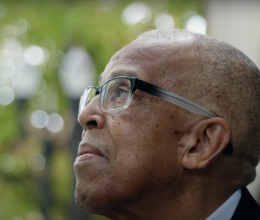ACLU REPORT: Oregon’s School-to-Prison Pipeline
October 19, 2010 – Students have been back in Oregon classrooms for more than a month, but the anxiety of the beginning of the school year is not over for many students of color and their families. A new report by the American Civil Liberties Union of Oregon shows that African American, Latino and Native American students are subjected to harsher discipline than their white peers in Oregon.
ACLU of Oregon Executive Director David Fidanque said that such discriminatory impacts are consistent across the country even though studies have shown that students of color are no more likely to violate school rules than their white counterparts.
He said the ACLU and many other organizations have long been concerned about the disproportionate punishment of young people of color.
“What we’ve seen is that this harsher punishment in schools eventually ‘graduates’ to a greater likelihood of intervention and incarceration in the juvenile justice system, and later to the adult justice system,” Fidanque said.
The ACLU report focuses on Oregon public school disciplinary data for the 2008-09 school year broken out by race and ethnicity. That report includes data on suspensions, expulsions, referrals to alternative education settings, and dropout rates. In addition, the report confirms that the disproportionate representation of youth of color is also reflected in data for the juvenile and adult corrections systems.
Among the findings in the report are that:
• African American students represent about 3% of all Oregon students, but they represent 7% of students who receive out-of-school suspensions;
• Native American students represent 2% of all students, but they represent 3% of students removed to alternative education settings;
• Hispanic students represent about 17% of all students, but they represent more than 25% of all students expelled; and
• White students represent 68% of all students, but only 61.5% of those expelled.
“Once students are referred to the juvenile justice system, the disparities for students of color become even greater,” Fidanque said. “Once again, African Americans represent 3% of the youth population, but 13% of those in “close” custody juvenile corrections facilities operated by the Oregon Youth Authority. Hispanics comprise 15% of the youth population, but 25% of those in close custody.”
Fidanque noted that state and many local education officials have been working to close the “achievement gap” between students of color and their white peers on the assumption that there is a connection between academic achievement and success in school.
“The point of our report is that it is also urgent to address discipline practices that are pushing young students of color out of our public schools,” Fidanque said.
He said that ACLU representatives have met with State Superintendent of Public Instruction Susan Castillo and members of her staff to discuss the data and ACLU’s request that her department issue annual reports on the disciplinary data.
“Superintendent Castillo shares our concern and her staff is already working with selected school districts to implement better practices,” Fidanque said. “However, ACLU feels strongly that annual reports of disciplinary data are essential both to hold districts accountable for the disproportionate impacts of their practices and to measure any progress in reducing and eliminating the racial and ethnic disparities.”
Fidanque said Superintendent Castillo has expressed concern that releasing data from many smaller school districts could have the effect of identifying individual students which would compromise the privacy of those students and their families. He said ACLU agrees that public reports must protect those important privacy protections.
“With appropriate safeguards, making more data available to the public, government officials and elected leaders will help school officials and the public evaluate and implement more effective policies aimed at shutting off the school-to-prison pipeline at the front end,” Fidanque said.
Related content

Half a Mile from the Flames: LA County’s Brush with Catastrophe...
February 8, 2025
Failed War on Drugs Policies Won't Stop the Overdose Crisis, But...
December 16, 2024
The Reverend Dr. LeRoy Haynes, Jr. and the Fight for Greater Justice
December 10, 2024
What Kamala Harris Must Do to End Abuse in the Criminal Legal System
August 30, 2024
Trump Promises to Militarize Police, Reincarcerate Thousands, and...
July 19, 2024Call for Artists
July 16, 2024
Supreme Court Grants Trump, Future Presidents a Loaded Weapon to...
July 3, 2024